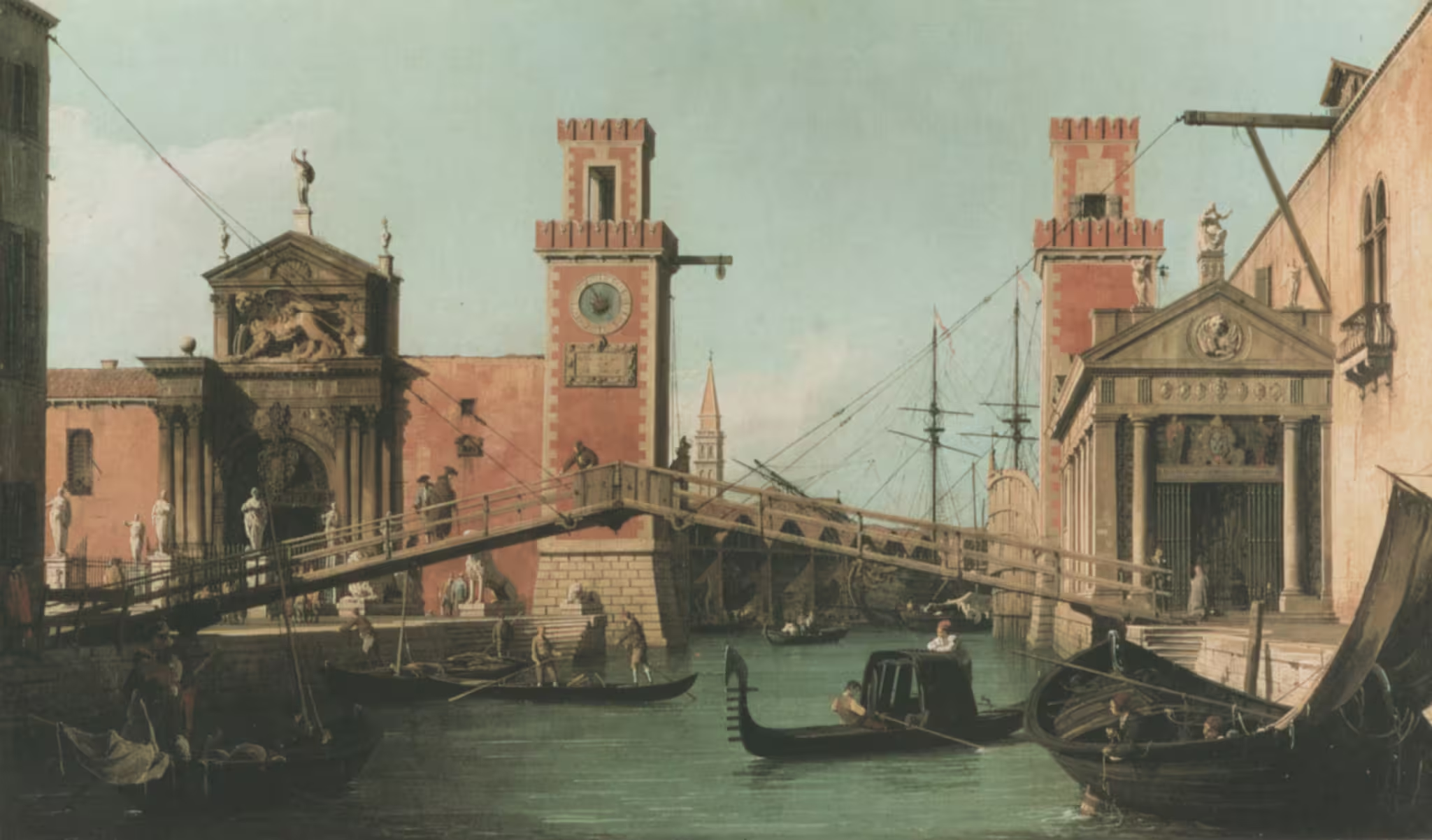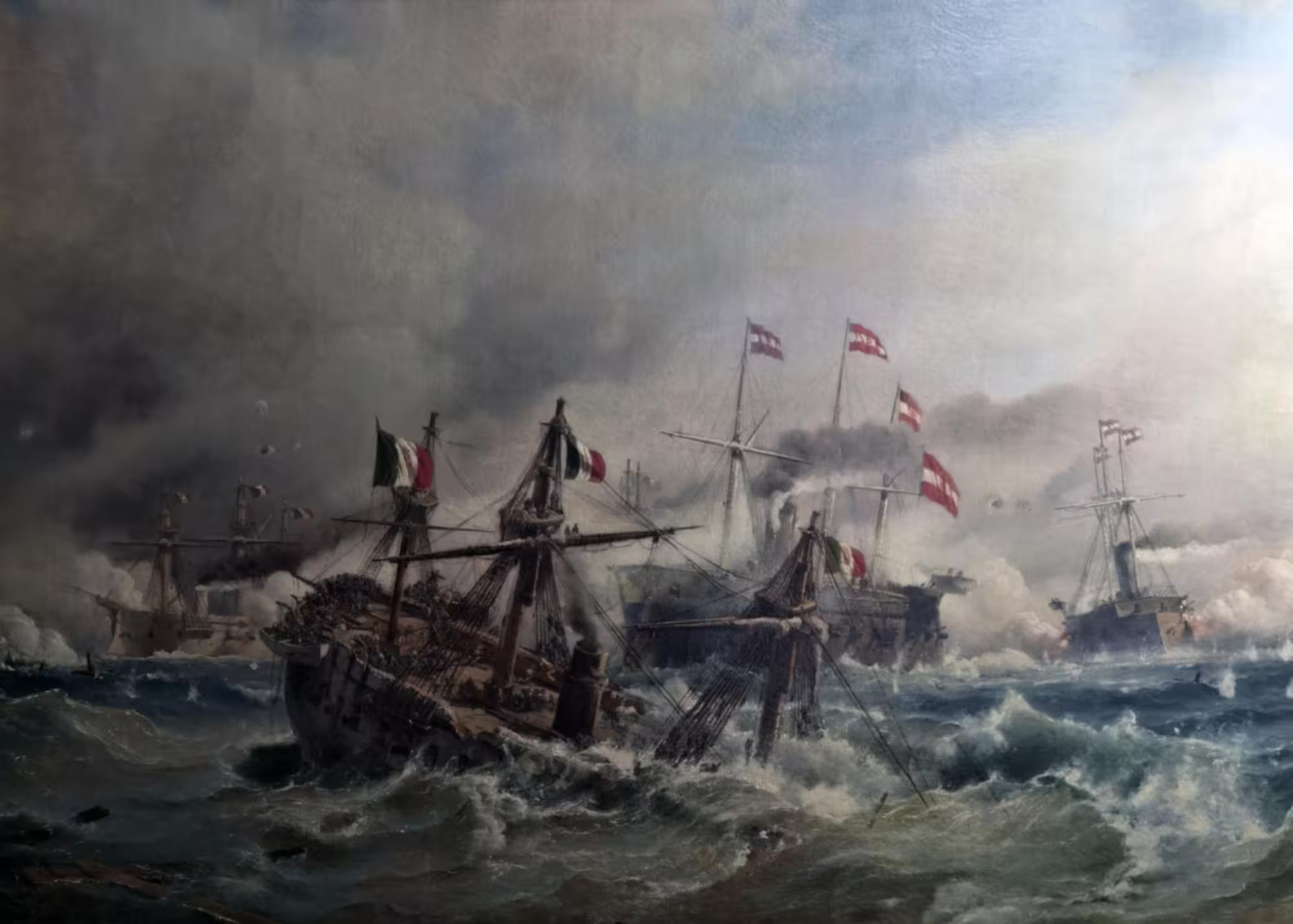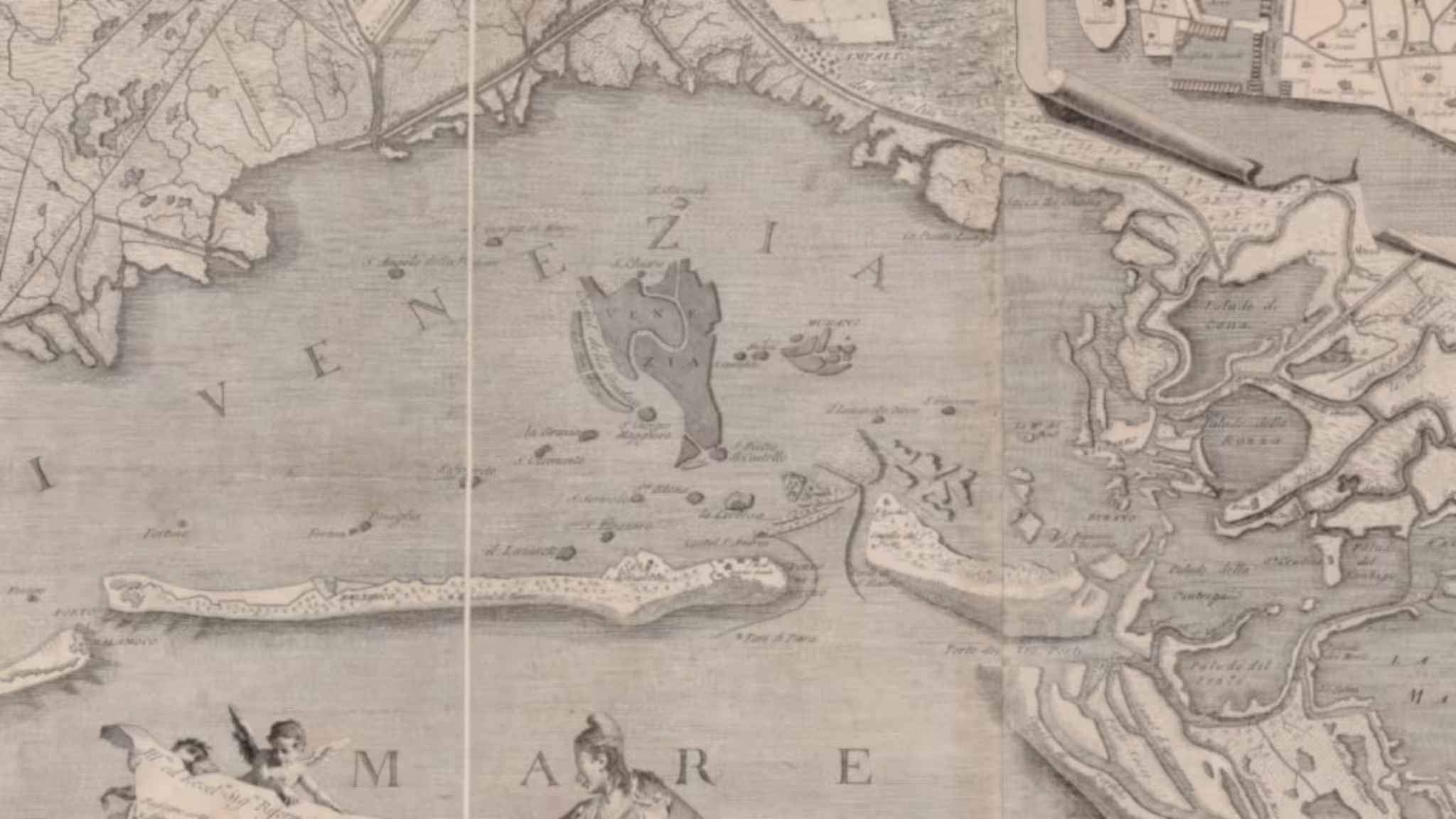The Republic of Venice never had an actual formal constitution, much less a written constitution.
Neither did the Republic of Venice have any kind of foundational event. There was no special assembly, no vote, no declaration of independence. The early Venetians, while formally accepting Byzantine suzerainty, de facto started acting independently.
The Venetian state — and therefore also its offices and institutions — was changing continuously as conditions inside and outside of it changed, until it gradually found its form in the 1300s and 1400s.
Only one office — that of the Doge — existed from the earliest times, when it was a Byzantine title, until the end of the Republic in 1797. However, even that office went from having almost dictatorial powers over the state in the first centuries, to being a mere figurehead at the end.
Separation of powers
The idea that a state should have three independent branches — an executive, a legislative and a judicial — originated in the late 1600s and early 1700s. At that point, Venice had already existed for almost a millennium.
While it would be easy to think that the Signoria was an executive, the Pregadi a legislative organ, and the Quarantia a judicial branch, that was simply not how the Venetian state worked.
The Venetian state was organised differently, without such separation of powers.
Seats of government
The main seat of government of the Republic of Venice was — since the early 800s — the Palazzo Ducale and the wider area around Piazza San Marco.
Most of the central institutions of the Venetian state were located physically in the palace, while many secondary offices were first in the Procuratie Vecchie and then in the Procuratie Nuove, which flank the Piazza on two sides.
However, many offices related to trade, commerce and production were located in the Rialto area, where most of those activities were situated.
Territory
The ancient heartland of the Venetian state was the Dogado — literally the Duchy. It extended along the Adriatic coast, over what were lagoons in Late Antiquity, from Grado in the north to Cavarzere (Capo d’Argine) in the south. The entire area was around 130km long, and roughly 15km wide.
The Dogado was governed directly from Venice, as the entire territory was within a short journey from Venice. A Podestà served as a local representative in the main urban centres.
For the first half of the history of the Serenissima, the Dogado was mostly synonymous with the territory of the Venetian state. The only outside areas under Venetian control were parts of Dalmatia, in what is now Croatia.
Following the Fourth Crusade in the early 1200s, Venice acquired numerous overseas territories, which became the Dominio di Mar — the Sea Dominion or the Sea State. The Venetian state usually delegated the government of such territories to patricians for a limited period at a time.
Later — in the early 1400s — Venice conquered large mainland territories, which became the Stato di Terra Ferma or Dominio di Terra Ferma. These conquests were separated into reggimenti, each under a patrician rettore appointed for 16, 24 or 36 months at a time. A reggimento roughly corresponded to a major, fortified city with the surrounding area, so Padua, Verona, Vicenza, etc., were such reggimenti.
The people of the dominions were generally not considered Venetian citizens.
About the Venetian state
I have written numerous posts, articles, newsletters and lists related to the Venetian state. They are listed here.
History
- Venice might not have been
- Invasions of Italy in Late Antiquity
- Why did Venice become a republic?
- The Fall of Venice
- A Chronology of the Fall of Venice
Institutions
- The Doge
- Doges of Venice
- The Consiglio Maggiore
- State institutions of the Republic of Venice
- Chronology of major Venetian state institutions
People
- Citizen of the Republic of Venice
- The Venetian Nobility
- Families in the Venetian Nobility
- Venetian Stories: Episode 13 — Nobles and Citizens
- Jacopo Tiepolo — the 43rd doge of Venice
- Marin Falier — doge and traitor
- Bianca Cappello — daughter of the Republic
Law and order
- The Venetian constitution
- Venetian Patent law — 1474
- A Venetian Law
- Prostitution in Venice
- Fornicators of Nuns
National narrative
Ceremonial
- However, we’ll make another — about the funeral of the Doge.
- Feasts and Celebrations in Venice
Symbols
Venice abroad
- The United States of America and the Republic of Venice
- John Adams on the Venetian constitution (source)
Translated sources
- Avogadòr — Dizionario
- Avogadori del Comun — Lessico Veneto
- Avogaria di Comun — ASV Indice
- Barbarèla — Dizionario
- Barbarela — Lessico Veneto
- Cavalieri di San Marco — ASV Indice
- Cittadinanza — Lessico Veneto
- Concione — Lessico Veneto
- Consegio de Diese — Dizionario
- Consiglio dei Dieci — ASV Indice
- Consiglio dei Dieci — Lessico Veneto
- Consiglio dei Quaranta o Quarantia — ASV Indice
- Consiglio del Doge — Lessico Veneto
- Doge — ASV Indice
- Doge — Lessico Veneto
- Dose — Dizionario
- Esecutori contro la Bestemmia — ASV Indice
- Esecutori contro la Bestemmia — Lessico Veneto
- Inquisitor — Dizionario
- Inquisitori alle Scuole Grandi — Lessico Veneto
- Inquisitori di Stato — ASV Indice
- Inquisitori di Stato — Lessico Veneto
- Maggior Consiglio — ASV Indice
- Maggior Consiglio — Lessico Veneto
- Magistrato de la Biastema — Dizionario
- Minor Consiglio — ASV Indice
- Pien Collegio — ASV Indice
- Pien Collegio — Lessico Veneto
- Pregadi — Lessico Veneto
- Pregài o Pregadi — Dizionario
- Prigioni — Lessico Veneto
- Procurator di san Marco — Lessico Veneto
- Procuratore di S. Marco — ASV Indice
- Procuratori di S. Marco — Dizionario
- Provveditori e Sopraprovveditori alla Sanità — ASV Indice
- Provveditori sopra la Sanità — Lessico Veneto
- Quarantia — Dizionario
- Quarantia — Lessico Veneto
- Sanità — Dizionario
- Senato — ASV Indice
- Signoria — Dizionario
Bibliography
- Boerio, Giuseppe. Dizionario del dialetto veneziano. Venezia : coi tipi di Andrea Santini e figlio, 1829. [more] 🔗
- Da Mosto, Andrea. L'Archivio di Stato di Venezia : indice generale, storico, descrittivo ed analitico in Bibliothèque des Annales Institutorum, 5. Roma : Biblioteca d'arte, 1937. [more]
- Leggi e memorie venete sulla prostituzione fino alla caduta della Republica, a spese del conte di Oxford, 1870-72. Venezia, Tipografia del Commercio di Marco Visentini, 1872. [more] 🔗
- Mutinelli, Fabio. Lessico veneto che contiene l'antica fraseologia volgare e forense … / compilato per agevolare la lettura della storia dell'antica Repubblica veneta e lo studio de'documenti a lei relativi. Venezia : co' tipi di Giambatista Andreola, 1851. [more] 🔗





Leave a Reply